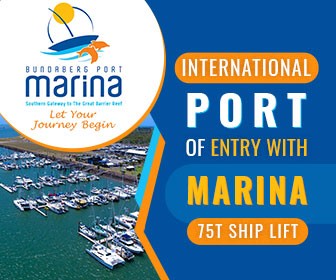Foreign vessels sold in Australia
Published 17 years ago, updated 6 years ago
I’m a Canadian and I’ve just recently purchased a US registered Valiant 40 in Bundaberg, Australia. I was receiving conflicting information from various Australian Customs officials regarding whether any importation duties and taxes were required on foreign vessels being sold in Australia to foreigners. I gradually worked my way up the hierarchy and reached a Sue Carling, Enforcement Operations. She came up with a definitive ruling which basically states that any foreign vessel that enters Australia on a cruising permit and is sold (albeit) to a foreigner is eligible to pay duties and taxes. In our case, 5% import duty (because of a free trade agreement with the US. I believe it’s 10% for other countries but I’m not sure on that) and 10% GST.
I thought that this may be of interest to other cruisers, especially if they are thinking of selling their vessels in Australia.
Barry Bateman
Provisions available to international yachts arriving in Australia
- apply for a Cruising permit;
- apply for a temporary import under section 162 of the Customs Act 1901 (the Act) and lodge a security or undertaking;
- formal importation of the yacht and pay relevant duty and Goods and Services Tax (GST).
The granting of a cruising permit or s.162 temporary importation is subject to a number of conditions. One of those is that the yacht will not be sold or listed for sale. The fact that the yacht is foreign owned and is intended to be purchased by a non-resident of Australia is irrelevant. It is the commercial transaction that is the crux of the matter.
Cruising Permit
In the case of the cruising permit, the permit is revoked when the yacht is sold. The yacht is then required to be formally imported and duty (if any) and GST paid before the title of the goods is transferred.
Temporary Import
A yacht imported under section 162 of the Act is in breach of the temporary import conditions when it is offered for sale. The security is forfeited and in effect duty and GST is paid.
Duty Drawback
A duty drawback is the refunding of Customs duty paid on imported goods that were:
- exported in the same condition as they were imported; or
– subject to a process or treatment prior to exportation and then exported; or
– incorporated into other goods that were exported.
Small craft including yachts and other vessels imported into Australia may be eligible in certain circumstances to claim a duty drawback. Access to the duty drawback scheme is dependent on whether the imported goods, being the yacht, has been treated, processed or incorporated into other goods for export, or is exported unused since importation.
An importer would not be eligible for drawback unless the vessel is imported, put up for sale and exported immediately. The yacht would not be able to cruise as it would be considered “used in Australia”.
Only the person who is the legal owner of the yacht at the time the goods are exported, or a person to whom this right has been assigned, can make a claim for drawback.
Refund of GST
A refund of GST cannot be made through the drawback process. For more information about refunds of GST please contact Australian Tax Office at www.ato.gov.au
Related to following destinations: Australia








